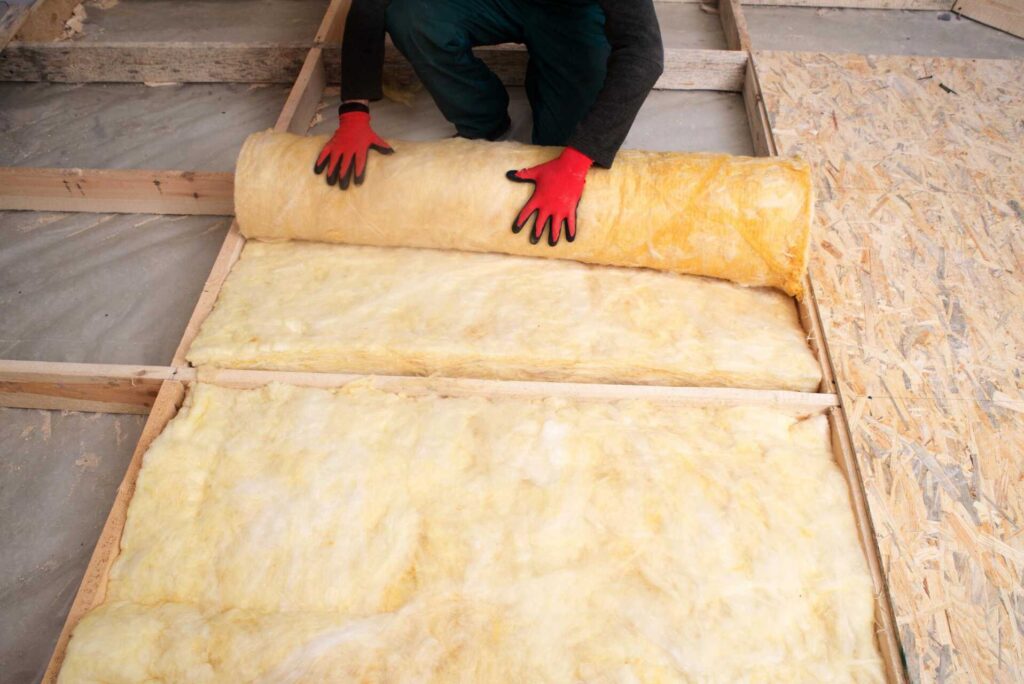
Contents
If you’ve ever dealt with mold issues in your attic, you understand the significance of effective insulation strategies. Imagine a scenario where mold growth is a persistent problem despite your efforts. Proper ventilation, a moisture barrier, and the right insulation material are essential to combat this common issue. But how exactly do these methods work, and how can they be implemented in your attic? Let’s explore these preventative measures further to ensure a mold-free environment above your home.
Key Takeaways
- Proper ventilation, like soffit vents and attic fans, is crucial for preventing mold growth.
- Installing a moisture barrier in combination with ventilation helps shield against moisture infiltration.
- Choose insulation with a high R-value, like fiberglass or cellulose, to resist heat flow effectively.
- Insulation acts as an energy-efficient barrier against air infiltration and mold formation.
- Maintaining a balance between ventilation, insulation, and moisture control is essential for a dry attic.
Importance of Proper Ventilation
Appropriate airflow in your attic is vital for preventing mold growth and upholding a healthy home environment. Ventilation upkeep plays a pivotal role in ensuring that the air circulates effectively, reducing the chances of moisture buildup that can result in mold formation. By allowing fresh air to enter the attic and expel stale air, you establish a balanced environment that deters mold growth.
To effectively manage humidity levels, it’s crucial to confirm that your attic has suitable ventilation systems in place. This can involve soffit vents, ridge vents, gable vents, or attic fans. Regularly examine these ventilation systems to ensure they’re in good working order and clear of any obstructions that may hinder airflow.
Additionally, consider installing a humidity control device to monitor and regulate humidity levels in your attic.
Maintaining ideal ventilation and humidity control in your attic prevents mold growth and contributes to a healthier living space overall. Mold thrives in moist, inadequately ventilated areas, so by taking proactive measures to enhance ventilation and humidity levels, you create an environment that’s less favorable to mold development.
Prioritizing ventilation upkeep and humidity control in your attic will help protect your home and family from the potential health risks linked to mold exposure.
Moisture Barrier Installation
Maintaining a well-ventilated attic is essential in preventing mold growth, but another key component in this effort is the installation of a moisture barrier. To effectively control moisture and prevent mold, it’s vital to implement proper ventilation strategies alongside the installation of a moisture barrier.
Moisture control is necessary in the fight against mold. By installing a moisture barrier in your attic, you create a protective layer that helps prevent moisture from seeping into the insulation and other vulnerable areas. This barrier acts as a shield, keeping moisture at bay and reducing the risk of mold growth.
A moisture barrier forms a thorough defense system against mold when used in conjunction with ventilation strategies, such as soffit and ridge vents.
Proper ventilation allows fresh air circulation, helping regulate humidity levels and prevent condensation buildup. When combined with a moisture barrier, these ventilation strategies work together to maintain a dry and mold-resistant attic environment.
Insulation Material Selection
Selecting the right insulation material for your attic is necessary for creating an effective barrier against heat transfer and moisture infiltration. When considering insulation options, one essential factor to consider is the R-value. The R-value measures the material’s resistance to heat flow; the higher the R-value, the better the insulation’s effectiveness.
Fiberglass insulation is a popular choice due to its high R-value and affordability. It’s relatively easy to install and offers excellent thermal performance.
Cellulose insulation is another option known for its environmentally friendly characteristics. Made from recycled paper, cellulose insulation has a comparable R-value to fiberglass and provides good soundproofing and thermal insulation. However, it may not be as efficient in humid conditions as other materials.
When selecting insulation for your attic, consider the R-value comparison, energy efficiency benefits, and your home’s specific needs to make an informed decision that will prevent mold growth and improve the overall comfort of your living space.
Review
By implementing proper ventilation, installing a moisture barrier, and selecting the right insulation material, you can create a fortress against mold in your attic. Picture a well-ventilated attic with a sturdy moisture barrier, surrounded by high-quality insulation, like a shield protecting your home from the unseen dangers of mold. Take these preventative measures seriously to make sure a dry, healthy, and mold-free attic space.
Recent Posts
Top Attic Air Sealing Techniques for Insulation
Have you ever considered how much energy might be wasted through unnoticed gaps in your
Top 10 Attic Air Sealing Techniques for Insulation
Just as a tightly sealed ship avoids leaks and remains buoyant, your attic’s air sealing
What Are the Best Attic Air Sealing Techniques?
When it comes to attic air sealing, understanding the common leakage points is vital for

